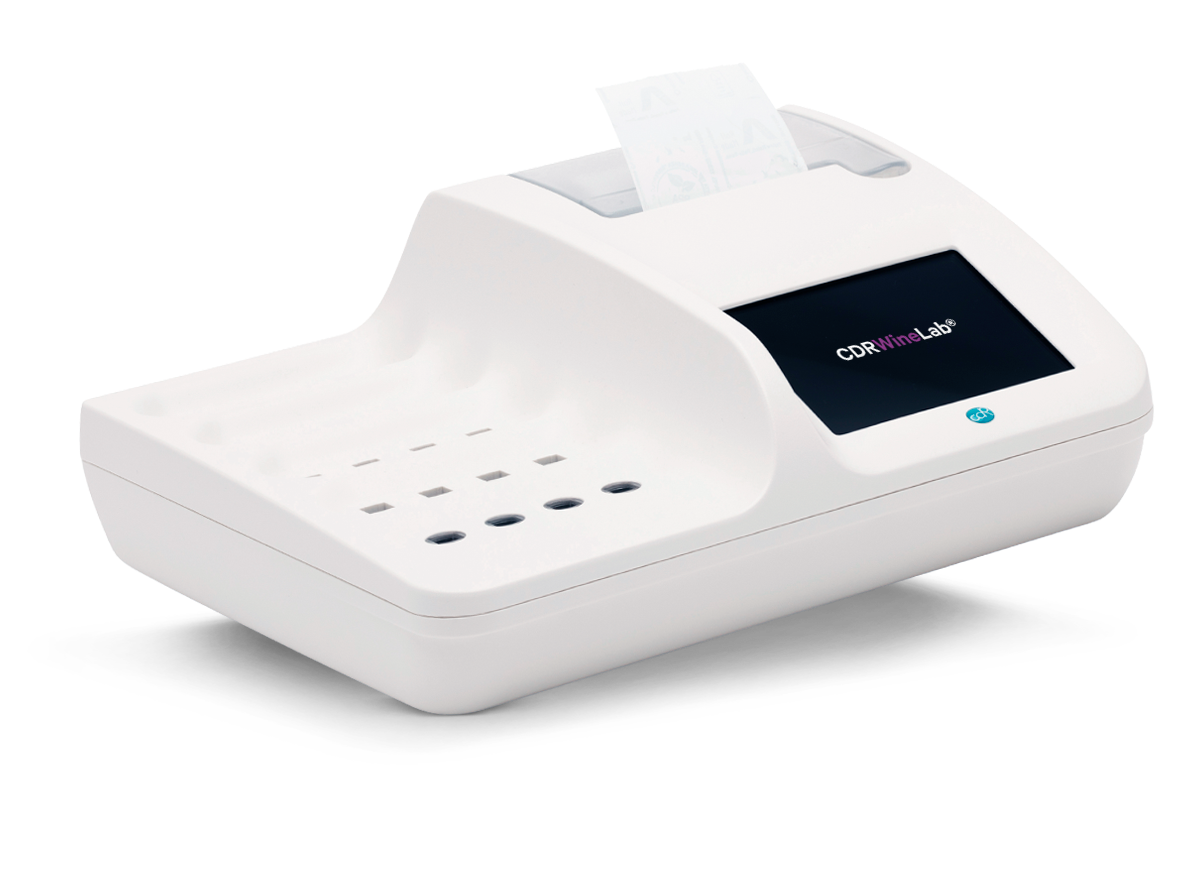Anthocyanins Extraction on Grapes
Anthocyanins are chemical compounds present in the peel of grapes, whose color changes depending on the acidity of the surrounding environment. They are part of the polyphenol group. In addition to significantly influencing color (depending on the variety of grapes), they protect the grapes from sun radiation. Anthocyanins are scarcely soluble in must and water, but very soluble in the alcohol produced during fermentation. The color of the future wine depends therefore on the degree of maturation of the species of wine and the duration of the peel-juice maceration.
In addition, the concentration of polyphenols strongly influences the stability of a red wine during ageing. Therefore, in the case of a red wine, it is important to take into account the phenolic maturity of the grapes when choosing the harvest period.
Features and benefits of CDR WineLab®
The method considered to be the reference method for the determination of phenolic maturity (Glories method) is very time-consuming because it requires a long extraction and sample preparation phase. In addition, it is necessary that the analyses be carried out by an operator specialised in laboratory techniques.
The CDR WineLab® method for the determination of Anthocyanins in grapes and therefore of phenolic maturity optimizes the Glories method in order to make it even simpler, faster and more accurate.
Method
Test type: End Point.
Time testing: 6 minutes.
Analysis sessions with multiple samples are possible up to a maximum of 16 tests for CDR WineLab®. This analysis is not available on CDR WineLab® Junior.
...
Sample treatment
Grapes: simplified must extraction method at pH 1 and pH 3.2. Modified Glories method.
Operating extraction technique:
1. Select a specific row of vines, from which you will collect a total of 200-300 g of grapes from both sides of the vines according to the random system. For better representativeness of the sample, you should always take subsequent samples of grapes from the same selected row of vines.
2. Grind the sample formed by full grapes in the mixer with code *ACF081 for 1 minute.
3. Take two samples, each of 6 g, and place them in the “disposable” cups provided for this purpose.
4. Add 6 mL of solution A with pH 1 to the first sample.
5. Add 6 mL of solution B with pH 3.2 to the second sample.
6. Cover the cups and wait 30 minutes. Manually mix them a couple of times.
7. Centrifuge the suspensions.
Principle of the test
The total Anthocyanins present in the wine in must and grapes, in a very acidic environment and through the action of a concentrated SO₂-based reagent, undergo a discoloration that is measured at 520 nm at end point. This discoloration is directly proportional to the concentration in the sample expressed in mg/L.
Calibration curve
The calibration curve of CDR WineLab®, obtained using reference methods (Glories method), confirms the excellent linearity of the system over the whole testing range.
...
Reagent test Kits
Measuring range
| Analyses | Measuring range | Resolution | Repeatability |
|---|---|---|---|
| Extraction of anthocyanin on grapes | 15 - 75 % | 1 % | 2 % |
Analyzers for process and quality control in winemaking
CDR WineLab®
Complete analysis panel, supplied already configured
Up to 16 determinations simultaneously
Possibility of carrying out analyses of the same sample
Integrated printer
Full connections (LAN - USB - Bluetooth barcode/QR code reader)
CDR WineLab® Jr
Partial analysis panel, customisable configuration
Up to 3 determinations simultaneously
Wireless connection to external printer
USB connections
